
Around midnight, I pull into my parking lot bivy for the evening. The trees gently sway back and forth, and the sky is eerily dark. Winds are forecasted to dissipate by sunrise, but intermittent gusts say otherwise. Nervous excitement is typical before a big day on a new line, yet for some reason I can’t shake a sense of foreboding. I finally fall asleep, somewhere between restlessness and lucid dreaming. The voice of a young woman whispers to me, “Turn around.” My eyes open, and I spring up to my car shaking violently from side to side in a fury of wind.
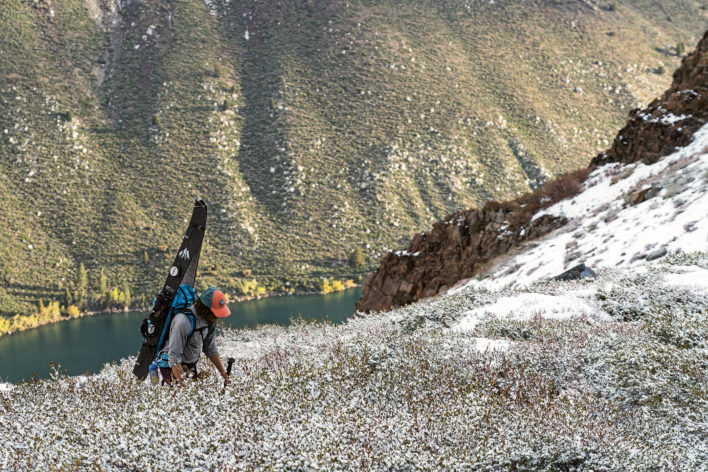
Standing tall above Convict Lake, Mt. Morrison dominates the skyline above Highway 395 outside of California’s Mammoth Lakes. Its trademark characteristic is the seemingly impenetrable northeast face, split by a steep, thin Y-shaped couloir that ends in a large cliff. For anyone obsessed with dissecting fall line weaknesses, the line’s beauty is undeniable.
I’d passed by it many times, yet it took several years and the right mindset before I came to view the line as a viable riding option. Void of beta, I called East Side photographer Christian Pondella, who only further intensified my curiosity. “Oh yeah, the Death Couloir,” he’d said.
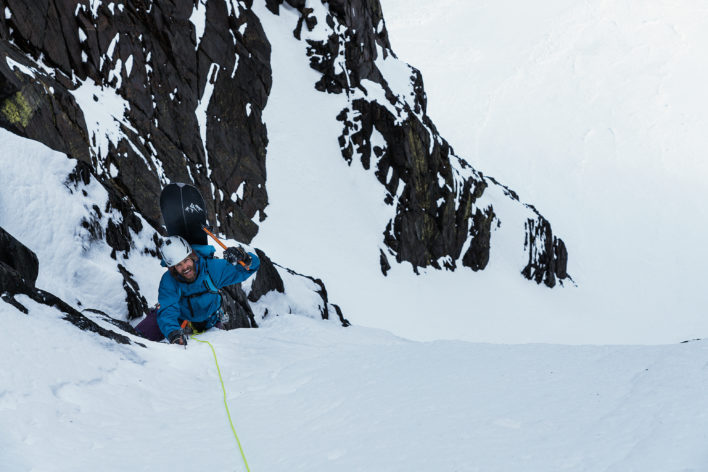
Records indicate that the peak was first climbed by either Norman Clyde or John Mendenhall in 1928, presumably via its eastern flanks. In more modern times, rumors suggest Yvon Chouinard climbed the route in the ’70s. When I called Chouinard to learn more, he insisted his “memory isn’t worth shit anymore,” before confirming he’d completed the climb alongside Doug Robinson and another friend. The trio carried skis to descend off the backside.
Morrison is notorious for its loose rock and poor protection. The only relatively safe way to gain the corridor is by a rare, delicate alignment of the stars. First, a melt-freeze cycle is needed for the 200-foot rock pitch to ice over. Second, one must time the cycle perfectly due to the hangfire exposure of opposing southerly aspects that funnel into the gun-barrel.

Relentless winds and my vivid premonition thwarted our first attempt. We didn’t even get our boots on that morning. Over breakfast in town, I learn that Pondo has two decades invested in this thing. In 1998, he and Nathan Wallace made a successful climb of the route, but with inadequate gear for a rappel, the duo aborted the mission and followed Chouinard and Robinson’s lead off the backside.
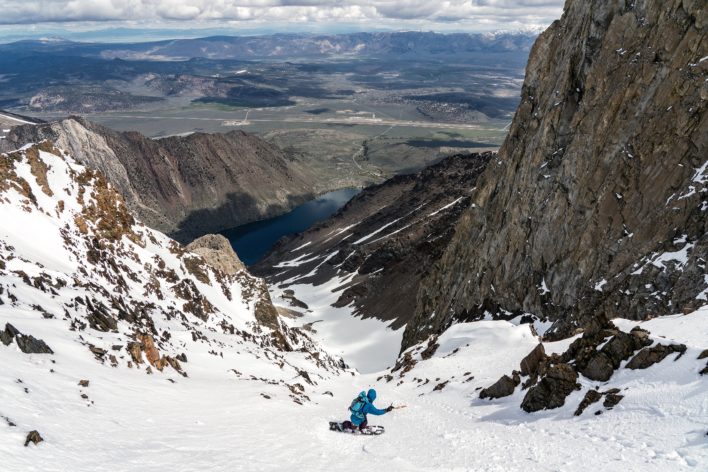
Two weeks later, we find ourselves back at the trailhead, moving well before the sun wakes. Light, consistent snowfall over the past several days has coated the upper ridgelines, sending small spindrifts down the sheer faces. We closely monitor the intensity and frequency of these loose dry blasts of snow and tuck ourselves in a rock alcove below the icefall pitch. Just as we tie into the rope, a roaring, powerful cloud comes barrels over us. I cling to my board, shoved into the snow, to not get pulled down slope. A swift escape to the opposing slope provides the perfect vantage to watch a massive pocket rip out—one that surely would have taken us out. Making the right call to back down validates a lifetime of learning from the mountains.
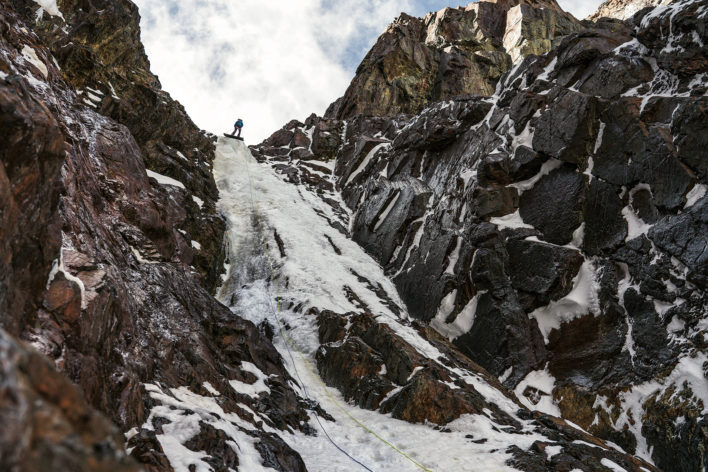
Winter slowly starts slipping through the cracks as the days become warmer, and finding an adequate window of freezing temperatures at night grows unlikely. Despite the odds, we’re back later that week. With the fresh snow flushed from above, we go through the motions. Pondella methodically leads the icefall, placing a handful of screws up the pitch for protection. Understanding that the mountain is waking up with each minute, I clean the line as quickly as possible. After the final bulge, Pondo and I reconvene in the couloir proper with a hug. Fully aware that the clock is ticking, our blood doesn’t stop pumping until we gain the ridge. I strap into my board as Pondella clicks into his skis, and we share the joy of his 20-year dream becoming reality.
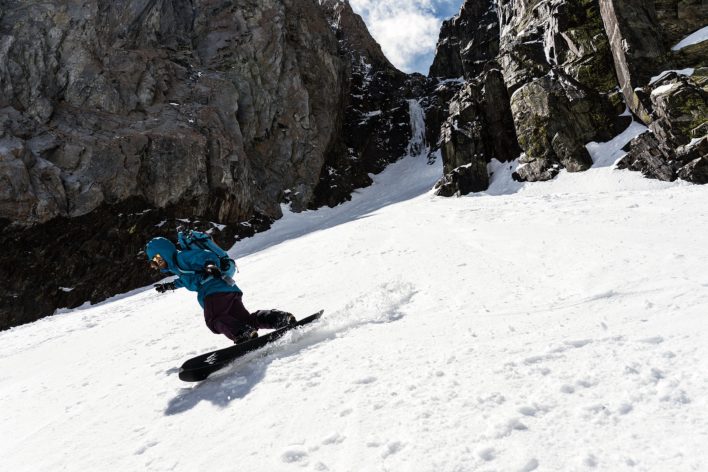
This piece was originally published in October 2020 in Issue #135. To read more about the untracked experience, pick up your copy here or subscribe.










Related posts: